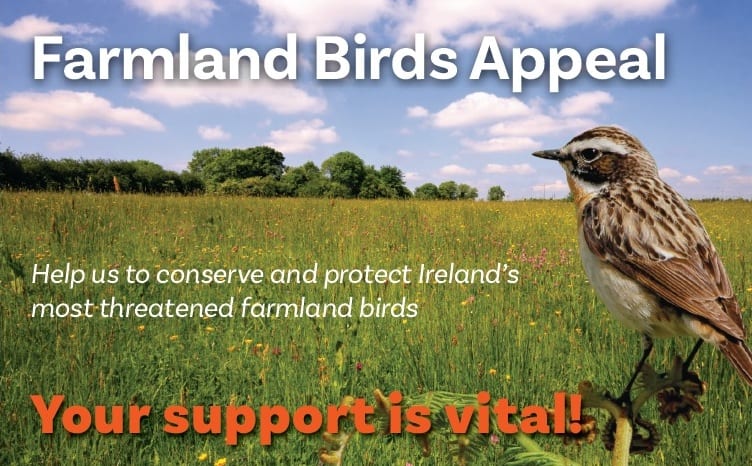Last week hundreds of surveyors for the Countryside Bird Survey (CBS) received their printed copy of the CBS ‘Irish Wildlife Manual’ in the post – a reward for the huge effort they’ve put in over the last 20 years and a reminder of the importance of annual scientific surveys in monitoring the fortunes of Ireland’s wild bird populations. This landmark population reports on the status of 49 bird species from across the Irish countryside over the period 1998-2016.
The Countryside Bird Survey is funded by the National Parks and Wildlife Service (NPWS) of the Department of Arts, Heritage and the Gaeltacht and is coordinated by BirdWatch Ireland.
The full CBS Irish Wildlife Manual report is available on the NPWS website here.
Find out more about the Countryside Bird Survey here.
“Most species covered by CBS were found to be either stable or increasing in numbers over the last 20 years” said Dick Coombes, national coordinator of the survey. “Twelve species were shown to be in decline though. One example is the Swift, which has been declining steadily over the 19 years. There are several factors which may be impacting on their numbers. Renovations to many old buildings in the last few decades have destroyed many of the Swift’s traditional nest sites and the birds are very slow to take up new nest sites unfortunately. Swifts need a ready supply of airborne insects to feed their young and the abundance of such prey is believed to have been much reduced in recent years. Swifts also face many challenges on their long migration routes and on the wintering grounds in Africa, where deforestation may be impacting on prey availability” according to Coombes.
BirdWatch Ireland have been active in trying to restore Ireland’s Swifts – read more about our Swift projects here.
Swifts have declined by almost 60% in Ireland since 1998, according to data from the Countryside Bird Survey.
“On the plus side though, many species are showing a healthy increase” says Coombes. Perhaps the most dramatic positive population change, as shown by the CBS, is the Blackcap. Formerly restricted to just five counties in Ireland (during the mid-1960s), it is now distributed right across the country and steadily increasing in abundance too. The scrub and woodland habitats in which Blackcaps breed hasn’t changed much in the time of CBS, so clearly some other factors are at play. It seems likely that climate change (milder weather in the breeding season) is the main reason for the species’ on-going increase.
Blackcaps have increased by a huge amount since 1998, according to data from the Countryside Bird Survey.
The Yellowhammer is an iconic farmland bird – its bright yellow plumage and lazy “little bit of bread and no cheese” song, brightens any summer’s day in the countryside. The CBS trend shows the Irish Yellowhammer population to be stable. However, this doesn’t tell the full story. In the 1970s, Yellowhammers were found in almost every corner of the country, but over the next 40 years, their range contracted by about two-thirds and today they are mainly found in the east and southeast and are completely absent from most western and northern areas. Yellowhammers are highly dependent on a steady supply of cereal and weed seeds and so they are generally associated with arable farmland. Changes in farming practices in those decades, namely the large-scale switch from arable to pasture, is undoubtedly the reason for the loss of Yellowhammers. The CBS only started in 1998, after the crash in the Yellowhammer population had already occurred, so the stable CBS trend needs to be seen in that context and treated with caution. Cereals are still widely grown in the southeast of the country and it is in this region that most of the CBS data on the species are gathered.
CBS data indicates that Yellowhammer in Ireland have been stable since 1998, but that doesn’t tell the full story. The species has declined to a huge extent since the late 1960’s.
We have a long way to go to restore Ireland’s countryside bird populations to the numbers and distribution they had in recent decades. BirdWatch Ireland will continue to represent our members and the Irish public in the fight for Ireland’s birds at national and EU level, but we’re asking for your support to help us increase our efforts. See below for details of our Farmland Bird Appeal and please donate if you can.











